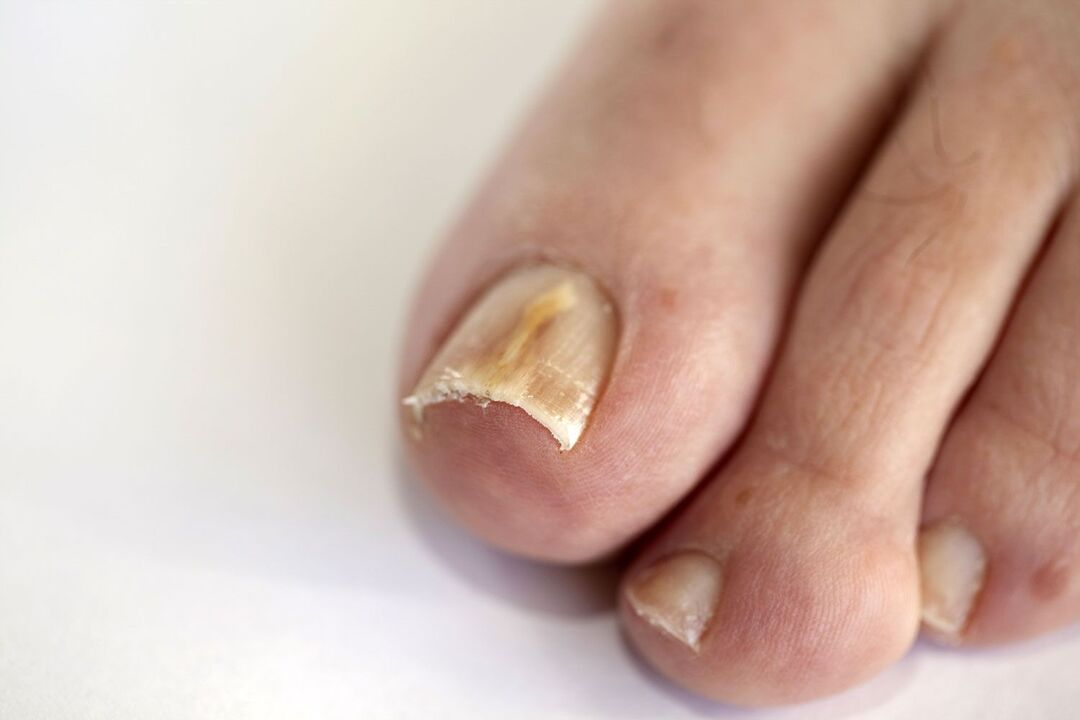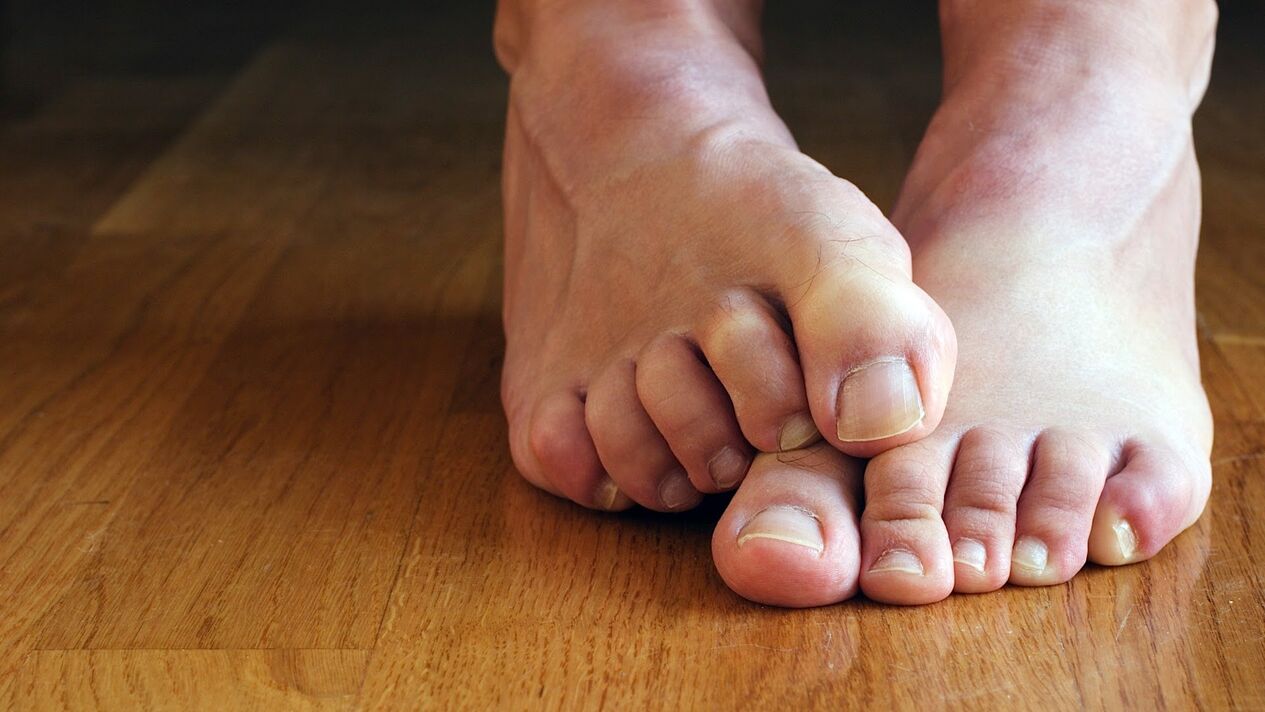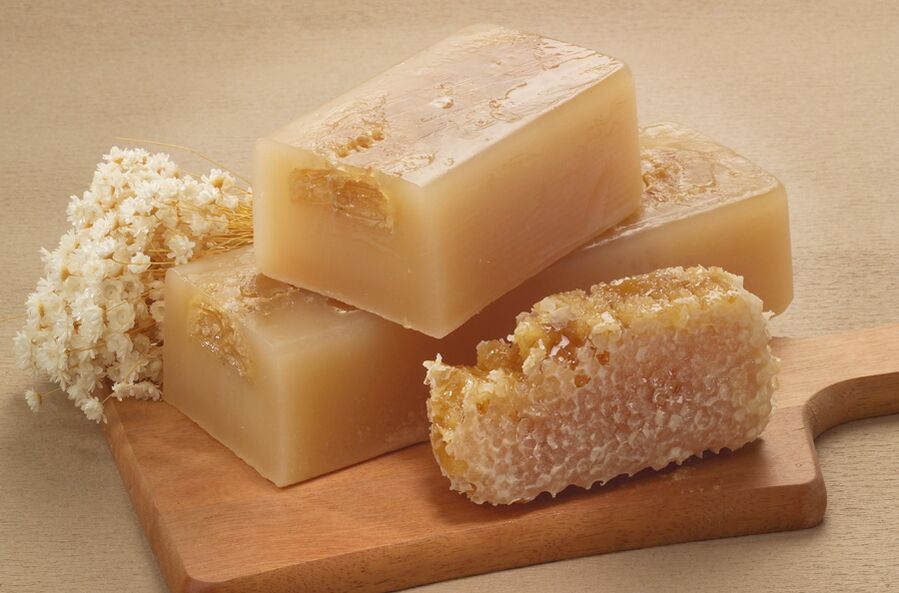If a person has fungus on his feet, then the question of how to treat it comes forward for him. Among the many forms of this infection, the fungus that affects the feet is one of the most common. The cause is the pathogenic fungal microflora of the species Trichophyton, which, with increased sweating, can affect both the skin of the feet and the nail plates on the fingers. The birthplace of microorganisms is Southeast Asia, where nature itself has created ideal conditions for its development: hot and humid climates as well as dense populations. In recent years, it has spread to Europe and America. Currently, more than 20% of the world’s population suffers from skin fungus.
Ways of infection

The most common mode of infection with fungal spores is contact. Often this occurs in a situation of shared residence or work of sick and healthy people.
Among the common ways of spreading fungus on the skin of the feet and nails are:
- ordinary household items that have direct contact with skin and toenails (bedding, socks, shoes, pedicure supplies);
- public baths and showers - as a rule, they are used by people working in dusty and dirty types of production (mines, factories), as well as athletes, energy deployments who often sweat;
- sun loungers, deck chairs and mats on the beach.

To prevent fungus, it is necessary to strictly adhere to the rules of personal hygiene, trying to avoid situations where infection is possible.
The likelihood of infection increases with sweaty feet, if it is not possible to wash them in a timely manner, change socks and shoes, and treat them with antiseptic agents. Therefore, disease outbreaks most often occur in field conditions, when during the long transition from sweating feet, favorable conditions are created for fungal reproduction.
In addition to sweaty feet, a weakened immune status increases the risk of infection. Currently, due to the deterioration of environmental conditions around the world and the growth of diseases such as diabetes, these factors appear at the top among the causes of the spread of this pathology.
Symptoms and diagnosis
The signs of foot fungus are widely known.
Among them:
- irritation, redness, severe itching and skin rash;
- exfoliation of scales from its surface;
- cracks, diaper rash in the interdigital area;
- nail defects.

Such pathology of the feet causes many problems and causes the victim not only physical, but also moral discomfort:
- feet become inflamed and swollen;
- an unpleasant odor emanating from the affected skin, although there is no sweat on the feet;
- nails change color, peel and crumble.
But the symptoms reach this stage of development gradually, if you do not fight the disease. Therefore, at the first signs, you should not find an effective remedy for foot fungus on your own, but contact a dermatologist-he is the one who should decide which anti-fungal agent should be used to defeat the pathogen as quickly as possible. With the current level of pharmacological development and compliance with expert recommendations, it is possible to cure the fungus on the feet quite quickly.
Coming to the office of a dermatologist with such a complaint, the patient first undergoes a diagnostic procedure. Clarification of the diagnosis is necessary, as it directly depends on how to treat foot fungus.
To determine the type of fungal spores, the following methods are used:
- Irradiation with special lighting makes the lesion area very visual, because the skin in this place under its rays stands out on the general background, becoming purple-red.
- Bacterial inoculation based on skin abrasion allows, by placing the sample in a nutrient medium, to propagate it for the purpose of external observation and elucidation of the type of pathogen causing the development of the disease.
- The PCR technique is the most modern method to date, helping to make a diagnosis with almost one hundred percent certainty, as it is based on fungal DNA analysis.
After receiving the results of research, choosing the most effective drug against the fungus, the doctor offers the patient specific drugs and determines the scheme for its use. To choose the most effective remedy for the fungus, he takes into account factors such as age, health status, concomitant diseases.
Pharmacological weapons
Still, choosing a highly effective and inexpensive remedy for fungus that grows on the feet, among a relatively significant number of items, is not an easy task. It can be not only an external drug, but also an oral preparation - if the external form is not powerful. However, as a rule, treatment begins with them.
The main active ingredient of the drug is terbinafine - a drug that is proven against fungus on the feet, capable of destroying fungal spores quickly. Both creams, and ointments, and sprays from the fungus are applied directly to the skin of the feet, previously washed and dried, while the ointment and cream forms should be lightly applied to the affected area. In people who have "caught" foot mycosis, the skin often takes on a rough-dense, thickened appearance, which is especially characteristic of the soles and heels. Remedies for fungi can not penetrate through such a "shield", therefore, before starting treatment, the skin must be steamed in a solution of hot soap to soften the stratum corneum and remove it with pumice stone and a special grinding file.
With increasing dryness of the epidermis, the base of the antifungal agent should be as oily as possible. This requirement is met by an ointment, which should be used in this case. In the area of the interdigital zone, where the skin is thinner and finer, a spray or suspension of the fungus is effective.
To combat foot fungus, or rather, toenails, special therapeutic varnishes are also used, applied on the nail plate.
Before application, it must be processed: the irregularities are polished, the affected area is removed as far as possible to help the penetration of the drug into the nail tissue.
Sometimes you need to enlist the help of a surgeon who completely removes the affected nail plate.
If this is not done, the most effective remedy for fungus on the feet will not be able to give the healing effect at the proper level.
In the most serious and advanced cases, foot mycosis cannot be tolerated by external agents alone, because harmful pathogenic wastes penetrate the bloodstream, beginning to poison a person from within. Then the attending physician prescribes antifungal antibiotics for oral administration, which have a systemic inhibitory effect on pathogenic microorganisms.
It is impossible to use a strong remedy for foot fungus without the direct guidance of a specialist, because the consequences of uncontrolled intake can lead to very serious consequences. One of them is the development of fungal spore immunity to these drugs and their components.
Restoration of the people

What is most helpful with foot fungus - pharmacology or folk medicine? Only a doctor is able to answer how to cure foot fungus, but it would not be superfluous to consult with him about home remedies.
The most reliable ways to help get rid of fungus on the feet have long been known:
- Soap washes away fungus on the feet. With fungus, foot baths with this component are useful, especially effective for excessive sweating on the feet. After grating 70% of the brown laundry soap without any aromatic fragrances, take a tablespoon of shaving and mix it with a tablespoon of soda. Pour the mixture into water heated to 40 degrees, dip your feet in a solution of soap and soda for half an hour. While steaming, lather the skin between the fingers, and rub the feet with a brush to increase the penetration of the solution components into the top layer of the epidermis. At the end of the procedure, which must be done daily, wash your feet with clean water and apply the external medication recommended by the doctor to the skin.
- Table vinegar is also a good folk remedy for fungus on the feet, especially against the shape of the nails. Carefully treat the nails, being careful not to injure them, as this contributes to the deepening of the infection. After pouring hot water into a bowl, the temperature of which should be about 50 degrees, pour a glass of 9% vinegar to the same place. Dip your feet into the vinegar-water solution (enough liquid to cover the feet completely) for 10-15 minutes. Then, without rinsing, dry your feet and wear clean socks. Repeat such foot baths for fungus 3-4 times a week.
- Another good remedy for foot fungus is iodine. An alcoholic solution of iodine should be applied with a cotton swab to the focus, after washing the feet and treating the nails. When using iodine solution against foot fungus, it is important to be careful not to burn, especially in the area between the toes.
- Propolis from the fungus is applied in the form of application applied to the nails and the skin around it, after steaming it in a hot soap solution.

Herbal recipes for fungus on the skin:
- Euphorbia is an effective remedy against foot fungus. The juice of the plant should be lubricated with sore nails with a cotton swab.
- Celandine from the fungus - 3 tablespoons. tablespoons of grass pour 1 liter of water, boil, cool to an acceptable temperature (40-46 degrees) and inflate in a foot solution.
- Burdock - for the treatment of foot fungus, you need to wrap it with well -beaten burdock leaves, wear clean socks and sleep with such a compress.
- Tea tree oil from fungus on the feet is effective only in the early stages of the disease.
Unfortunately, a drug that can get rid of foot fungus in one application has yet to be invented. Therefore, when using both pharmaceutical and folk remedies for fungus, it is important to consult a doctor and follow his recommendations. The best remedy for foot fungus is a medication prescribed by a doctor.

























